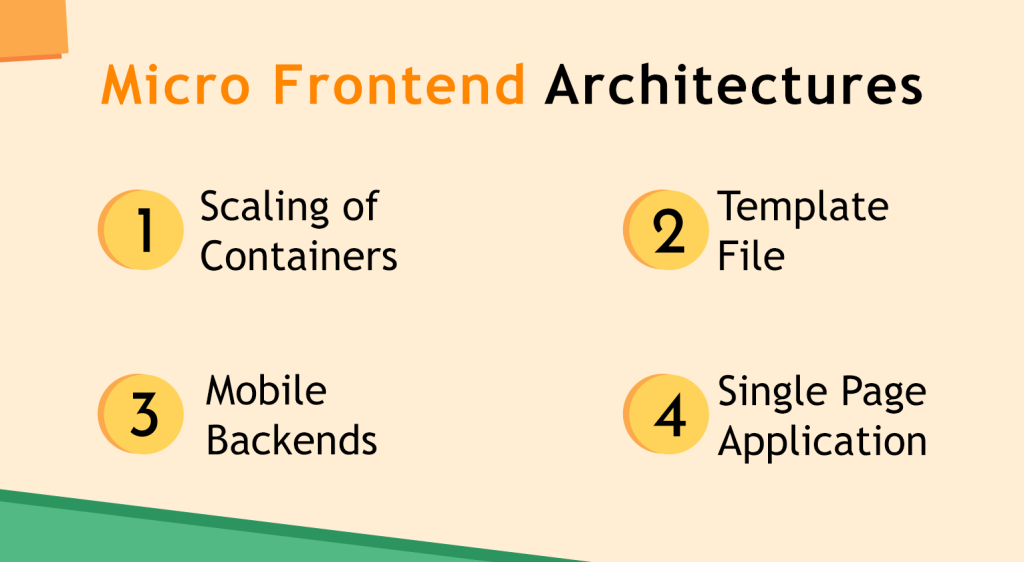
Are you looking for a new way to develop web applications? Have you been hearing about the benefits of serverless web application development but aren’t sure if it’s right for your business?. As we are an expert software company in serverless web application development, We want to share my knowledge with you and help answer your questions. This article will explore what exactly serverless web app development is, why businesses should adopt it, and whether or not it’s suitable for your particular needs.
Serverless web application development has become increasingly popular due to its potential advantages over traditional methods. It offers improved scalability by removing much of the infrastructure management required when using more classic approaches—allowing developers to focus on creating innovative products instead of worrying about hardware limitations. Additionally, serverless architectures are far more cost-effective than other solutions since they require less manual effort and fewer resources overall. Finally, these apps tend to be more secure as well – making them ideal for companies who prioritize data privacy and security in their operations.
So now that we know some of the benefits of serverless web application development, let’s take a closer look at whether or not it might be appropriate for your business. In the following sections we’ll cover various use cases where one could leverage this technology and discuss how each situation would affect the decision process. By understanding the different scenarios better, you’ll be able to determine if serverless app development is indeed a good fit for your organization..
What Is Serverless Computing?
What is Serverless Computing? It’s a revolutionary way of building applications with no infrastructure, no servers and no virtual machines. Serverless architecture consists of application code that runs on serverless functions, providing an innovative framework for developers to build scalable & cost-efficient solutions. With serverless computing, the cloud provider manages all the underlying infrastructure and handles scalability automatically when demand increases or decreases. This eliminates the need for manual scaling configurations and provides businesses with greater flexibility in their development process.
Serverless computing offers numerous benefits compared to traditional web development models. It allows developers to focus more time on writing code rather than managing infrastructure and it drastically reduces operational costs by eliminating the need for purchasing hardware and paying additional fees for maintenance services. Furthermore, since there are fewer moving parts involved in serverless architectures, they are much easier to develop and maintain over time. These advantages make serverless technology highly attractive to companies looking to optimize their development processes while still reducing overhead expenses.
Advantages Of Serverless Technology
Serverless web application development can provide businesses with several advantages. To begin, automatic scaling allows for a much smoother user experience and improved performance as traffic increases or decreases, while also cutting operational costs by removing the need to manually scale up or down. Additionally, serverless technology reduces the time it takes to get applications off the ground significantly; faster time to market is critical in today’s competitive environment.
From a developer productivity standpoint, utilizing this architecture enables developers to focus on writing code rather than worrying about infrastructure management tasks such as security patches and monitoring activity logs. Furthermore, since there are no physical servers involved in running your app, cost savings are realized due to reduced operational costs associated with maintaining hardware resources like memory and storage space.
Finally, leveraging cloud-based services eliminates potential risks that come from using outdated versions of software – you always have access to the latest version without having to worry about updates. This helps ensure top-level security compliance throughout all stages of production.
These benefits make serverless web application development an attractive option for businesses looking for ways to increase their efficiency and reduce overhead expenses.
Who Should Utilize A Serverless Architecture?
With the advantages of serverless technology in mind, it is important to note who should be utilizing a serverless architecture. In general, any business that has an emphasis on time to market and user experience would benefit from this type of development model. It also allows for scalability and fault tolerance through its cloud provider support and API Gateway integration.
Businesses with large web application workloads can utilize serverless architectures as well due to their ability to scale quickly and cost-efficiently. Additionally, businesses with limited resources can enjoy the same benefits without needing additional staff or expertise in managing more complex infrastructures. Finally, companies who are looking to develop sophisticated applications without having to invest in heavy infrastructure can take advantage of this new approach while still providing high performance solutions at relatively low costs.
Serverless technologies offer numerous benefits including increased agility, decreased operational complexity, improved scalability and reduced cost – making them ideal for many types of businesses. With these qualities in mind and a focus on creating exceptional experiences for users, companies can ensure they’re able to deliver outstanding results across all aspects of their operations. As such, when considering which type of web application development might be right for your business, it may be wise to consider the many opportunities presented by serverless solutions.
When To Avoid Using A Serverless Architecture
Recent statistics show that only 2.5% of businesses utilize a serverless model, demonstrating its potential inefficiencies for some projects. It’s important to consider when and how you use it if you’re looking to maximize the benefits of your business operations. Here are four reasons why you should avoid using a serverless infrastructure:
- If your web application requires more than what the server capacity can provide, then traditional servers would be better suited for this task.
- Server management may become complex with a large amount of users or data points entering the system at once.
- If you have strict requirements regarding security protocols, such as HIPAA compliance, then relying on third-party services could leave your data unaccountable and vulnerable to threats.
- Lastly, if there is no guarantee that each user will experience consistent performance regardless of traffic volume, then utilizing a serverless architecture won’t be beneficial for those visiting the website.
The above examples demonstrate scenarios where investing in traditional servers would be the best option for optimal performance instead of opting for an unreliable and often unpredictable nature of serverless technology . That being said, understanding when and why to properly integrate this type of infrastructure into your business strategy can offer numerous advantages which we’ll explore next…
The Benefits Of Serverless Technology

Now that we’ve discussed when to avoid using a serverless architecture, let’s look at the potential benefits of developing your web applications with this technology. Serverless applications are designed for scalability and agility, meaning you can quickly deploy them without having to worry about maintaining or scaling up an infrastructure. Additionally, because they run on-demand rather than a traditional application stack, your cost savings will add up over time.
The other key benefit of serverless development is its flexibility in terms of application architecture and components. You decide which services are best suited for your project, taking into account the needs of both performance and security. This allows you to create custom solutions tailored specifically for your business without relying on third-party vendors or expensive cloud resources. Plus, if you need more power or features down the road, simply adding additional components won’t require major changes to existing code.
Finally, choosing a serverless platform such as Dashbird gives developers access to their own unique set of tools and features that help streamline their workflow while building out complex serverless stacks. With these perks in mind, it’s easy to see why businesses everywhere are starting to embrace the possibilities offered by serverless application development!
Dashbird Platform Overview
Picture a crowded city, bustling with life. The streets are filled with people and cars, each one operating as part of a larger system that keeps the city running. Now imagine this same scene but without any infrastructure – no roads or buildings, just an empty expanse of land. This is essentially what serverless web application development looks like: an environment in which all components exist independently, yet work together to create something greater than the sum of their parts.
Dashbird Platform provides businesses with the necessary tools for successfully managing serverless applications on Cloud Service Providers such as Amazon Web Services, Google Cloud, and Microsoft Azure Functions. It offers support for deployment automation, monitoring & alerting, debugging & troubleshooting across multiple cloud providers from a single dashboard. Dashbird also enables developers to monitor complex Kubernetes based applications using its powerful API Gateway integration.
The platform makes it easy to manage deployments at scale while providing visibility into performance metrics and automating tasks related to error tracking and resolution. Furthermore, it offers features such as cost optimization advice and real-time alerts when problems arise so companies can take swift action in order to prevent downtime. With these benefits combined, Dashbird serves as an essential tool for any business looking to capitalize on the power of serverless computing technology.
How To Deploy A Serverless Application
For businesses wanting to leverage the benefits of serverless web application development, it’s important to understand how to properly deploy a serverless application. To help streamline this process, here are 4 steps essential for successful deployment:

1. Choose Your Serverless Approach: Different public cloud environments have different execution models and features related to their serverless offerings. Businesses should decide which platform best suits their business logic before proceeding with any further action.

2. Design Your Application: After deciding on your preferred cloud platform, you can begin designing your architecture around specific services offered by that provider. This will provide an opportunity for you to create something tailored specifically for your needs while taking advantage of all the available options within that particular environment.

3. Build & Test: Once the design has been established, developers can begin building out the necessary components and testing them in order to ensure they meet performance requirements and adhere to set standards of quality assurance (QA). By doing so, businesses can confirm that there won’t be any issues when it comes time to launch their applications into production.

4. Deploy & Monitor: Finally, after everything is built and tested, it’s time to deploy the application into its production environment! Additionally, once deployed,businesses should also monitor their applications closely as part of their ongoing maintenance strategy in order to identify potential problems quickly and address them accordingly for optimal performance in perpetuity.Cost savings associated with using a serverless approach are just one benefit; now let’s explore other advantages…
Cost Savings
Serverless web application development has been found to drastically reduce costs, with Amazon SNS reporting a 50% decrease in overall AWS bill. This is due to its unique pay-as-you go model which only charges for the resources used during operation and not idle time or unused capacity. With this approach, businesses are able to optimize their resource utilization and minimize waste on units of consumption such as storage, memory and compute cycles. Additionally, because serverless applications require no vendor lock in, businesses can easily switch providers without incurring extra cost or disruption.
This agility allows companies to quickly adapt to an ever changing market without sacrificing budget efficiency or scalability options. Furthermore, developers have more freedom when designing systems that take advantage of third party services like databases and authentication approaches. By using these off the shelf components instead of building them from scratch, organizations can save even more money on development costs while still creating highly reliable applications.
The combination of reduced costs, optimized resource usage and vendor flexibility makes serverless web application development a great fit for any organization looking to maximize savings while staying ahead of the curve in terms of innovation.
Quicker Deployment And Updates
Serverless web application development offers a much quicker deployment and update process than traditional methods. Not only does this save on time, but it also saves money as well. With rapid deployments of serverless solutions, development teams are able to quickly iterate through user management and interface updates without the need for costly resources or lengthy setup times. This allows businesses to move at a faster pace while still ensuring that their users have up-to-date software with all the latest features.
The scalability offered by serverless setups makes them ideal for business applications where data is constantly changing and evolving. Instead of having to manually manage servers and services, developers can easily scale up or down based on demand in real-time. This ensures that no matter what changes take place, there will always be enough processing power available for users’ needs. Additionally, because these solutions don’t require hardware investments upfront, businesses can deploy new projects quickly without worrying about any extra cost associated with ramping up operations.
With the quickness of serverless deployment combined with its efficient use of resources, businesses now have access to an unprecedented level of agility when it comes to developing cutting edge products and services. As opposed to being stuck waiting months before releasing updates or launching entirely new applications, organizations can now keep their customers happy with near instantaneous releases – allowing them to stay ahead of the competition in terms of innovation. Moving into closer code execution and reduced latency presents yet another opportunity for companies looking to get the most out of their serverless infrastructure investment.
Closer Code Execution And Reduced Latency
Serverless technology is truly revolutionary in its ability to improve code execution and reduce latency. With IBM Cloud Functions, for instance, response time can be reduced by up to 99%. This means that users get the answers they need almost instantaneously – an absolute godsend for any startup looking for a competitive edge!
Startup times are also greatly improved with serverless computing as there’s no need to wait for servers or other resources to become available. All you have to do is deploy your application, then sit back and watch it take off like a rocket! Cold start times are also significantly decreased; instead of waiting minutes or even hours for your app to wake up from hibernation, you can enjoy lightning-fast results every single time.
This level of performance boost makes serverless web applications incredibly attractive options for businesses seeking substantial returns on their investments. Not only does this help them stay ahead of the competition but it also leads directly into cost savings due to lower resource utilization. It’s clear why so many companies are turning towards this cutting-edge technology when constructing their digital solutions.
Security Considerations Of Serverless Computing
Security is a primary concern for businesses when it comes to serverless web application development. Cloud infrastructure and cloud technologies are used extensively in serverless computing, so organizations must make sure that appropriate measures are taken to ensure their data remains protected. It’s important to consider the security implications of using server-side applications, such as authentication methods and encryption protocols.
Business process automation can also be a potential security risk if not implemented properly. AWS X Ray helps identify any vulnerabilities within an environment by monitoring API calls made by code running on servers or functions within the system. This allows developers to quickly detect anomalies which could indicate malicious activity.
Organizations should have detailed plans in place for how they will handle security threats and remain up-to-date with new best practices for keeping their systems secure. Without proper attention devoted to this task, organizations may face significant consequences from data breaches or other types of cyberattacks. By staying vigilant about the security considerations associated with serverless web application development, businesses can enjoy its many benefits while ensuring their assets are kept safe.
A key benefit of serverless architectures is that they enable scalability without requiring long-running processes that can become inefficient over time…
Inefficiency In Long-Running Processes
Long-running processes can be inefficient if they rely on idle capacity. This means that the infrastructure has to constantly run and consume resources, even when not actively processing anything. Serverless technology provides an alternative by allowing businesses to scale compute capacity up or down as needed to meet demand. In many cases, this eliminates the need for fixed asset investments, meaning companies no longer have to pay for equipment or services that aren’t being used.
Serverless architecture also helps with file storage since it enables organizations to store files in a decentralized cloud network rather than keeping them locally on premises. By distributing data across multiple servers instead of one main server, businesses reduce the risk of losing important information if their primary hardware breaks down. This is especially helpful when using batch processing or streaming layers, which requires large amounts of data stored in separate locations.
Overall, serverless web application development offers increased efficiency compared to long-running processes by eliminating wasted idle capacity and reducing dependency on local file storage systems. It also allows for more flexible scaling options so businesses only pay for what they use. As such, it’s worth considering whether your business could benefit from taking advantage of these benefits before committing to traditional methods.
Vendor Lock-In Risk
Every new technology comes with certain risks. In the case of serverless web application development, one risk to be aware of is vendor lock-in. Vendor lock-in occurs when a business becomes dependent on proprietary technologies from a third party service or cloud services provider for its operations and applications, leaving them unable to easily move away from that service if needed.
The problem with this type of dependency is that it can limit competition within the industry and drive up costs in the long run. Fortunately, there are ways to mitigate these types of risks through careful planning and proper implementation of serverless cloud infrastructure solutions such as AWS Cloud Formation. By understanding how the various pieces fit together and making sure they’re properly configured upfront, businesses can ensure their organization remains agile enough to switch vendors should the need arise.
However, despite all precautionary measures taken by an organization, there will always remain some level of risk associated with relying on third parties and cloud services providers for specific components of an architecture. Businesses must weigh that cost against potential gains provided by leveraging best-of-breed software solutions offered by those same vendors before committing to any particular platform or solution stack.
Monolith Vs Microservices Web App Development
When it comes to web application development, there are two main approaches: the monolith and microservices architectures. The traditional monolith approach consists of developing a single dedicated server that contains all components for an entire website or web app. This type of architecture is known for being easy to develop but difficult to scale and maintain in the long run. On the other hand, microservices use container images, open source frameworks, and a serverless computing model. This approach allows developers to break down individual services into independent parts that can be deployed separately without affecting each other. With this structure, businesses have more flexibility when scaling their applications as well as better control over how they deploy new features.
The debate between monolithic vs microservice architectures has been ongoing for some time now, and both sides have valid arguments about which one offers more benefits for business owners. Monoliths are typically easier to develop than microservices due to their simplicity; however, scalability issues arise once teams try to add additional functionality or make changes on existing servers. Microservices offer a much greater degree of scalability since each service acts independently from others, allowing teams to quickly launch new features with little disruption. Additionally, the cost savings associated with using container technology makes microservices particularly attractive for businesses looking to reduce overhead costs associated with web maintenance and deployments.
Ultimately, whether you choose a monolithic or microservice-based architecture will depend on your specific needs – so it’s important that you assess what’s best for your business before making any decisions. Both approaches have advantages and disadvantages depending on the situation, so carefully consider all options before deciding which route would be most beneficial in terms of cost efficiency and agility.
Micro Frontend Architectures

Micro Frontend Architectures are becoming a go-to choice for serverless web application development. This innovative architecture leverages small, focused components to provide the utmost flexibility and scalability in applications. Here’s why developers should consider this approach:
- Scaling of Containers: Micro frontends enable teams to easily scale containers without having to rearchitect the entire application structure. With fewer lines of code needing to be changed, scaling can occur much faster than with traditional architectures.
- Template File: A single template file can be used by multiple micro frontend components which significantly reduces development time and complexity associated with designing new pages or features.
- Mobile Backends: Mobile backends gain extra agility from being able to leverage smaller services that work together as part of a larger system rather than one monolithic backend service.
- Single Page Applications: By utilizing micro frontend architectures, developers have access to powerful tools for creating Single Page Applications (SPAs). SPAs create faster user experiences, better performance metrics and improved SEO rankings compared to traditional applications.
The advantages of using a micro frontend architecture when developing serverless apps are clear – it enables excellent scalability while simultaneously reducing development time due its simplified template file structure and mobile backends capability, as well as providing an enhanced user experience through Single Page Application technology. Ultimately, businesses looking to use serverless apps should seriously consider this modern architectural style for their project needs.
Conclusion
Serverless web application development is quickly becoming the go-to choice for businesses looking to reduce cost, improve security and scalability. The Dashbird Platform makes deploying these applications incredibly easy and efficient, but it’s important to do your research before deciding if serverless is right for you.
When making this decision, consider the advantages of using a microservices architecture instead of a monolith one. Microservices allow for faster deployment times with fewer dependencies between services and greater overall flexibility. Security needs should also be taken into account – with Cloudflare providing additional protection from DDoS attacks as well as other threats. Finally, make sure to measure the cost savings associated with switching over to a serverless model – which can prove invaluable in the long run.
In conclusion, serverless web application development offers numerous benefits that could help propel your business forward into success. With careful consideration of all angles including costs, security and scalability, it may well be worth taking the plunge and transitioning towards serverless computing today!
How GTCSYS develops serverless web applications for you
GTCSYS can develop serverless web applications for you by utilizing serverless technologies such as AWS Lambda, Azure Functions, and Google Cloud Functions. We will work with you to create a custom solution that fits your needs and budget. Our team of experienced developers can help you design and develop a serverless web application, as well as provide ongoing support and maintenance. We can help you take advantage of the scalability, cost savings, and performance benefits associated with serverless computing.
Frequently Asked Questions
What Is The Difference Between Monolith And Microservices Web App Development?
Are you considering the differences between monolith and microservices web app development? It can be hard to know which approach is best for your business. As a serverless web application development expert, I’m here to provide some clarity on this important topic. Monolithic architectures have been around since the early days of software engineering. In these systems, all components are tightly coupled together in one large package. This makes them difficult to update or scale because changes must be applied across the entire system at once. Microservices architectures break applications into smaller services that communicate with each other using APIs or messaging queues. Each service has its own independent codebase and deployment cycle, making it easier for teams to develop and maintain features independently from one another. Serverless technology takes things a step further by abstracting away infrastructure management altogether. Serverless platforms like AWS Lambda allow developers to focus solely on writing their code without worrying about provisioning hardware or keeping servers running 24/7. By eliminating costly overhead costs associated with traditional web hosting, businesses can quickly spin up powerful applications that cost less money over time but still offer top-notch performance and scalability benefits. So how do you decide if serverless is right for your business? First and foremost, consider whether your team has the skills necessary to build an effective serverless solution – it requires a different kind of thinking than traditional web development approaches. If they’re ready for the challenge though, then there’s no doubt that serverless is worth exploring as an option due to its cost savings and agility advantages. Ultimately, only you can make the call based on what works best for your company’s needs and budget constraints.
What Are The Security Considerations When Using Serverless Computing?
When it comes to serverless computing, security considerations should always be taken into account. But what exactly are these considerations? In this article, we’ll explore the key elements of a secure serverless environment and how you can ensure the safety of your business’ data. To understand the complexities of serverless web application development, let’s break down its components: – Compute: This includes any workloads that use compute resources such as AWS Lambda functions or Azure Functions. Data Storage: Any databases or file storage associated with the application. Networking: Anything related to network traffic from APIs to DNS lookups. The security measures for each component vary depending on the type of service being offered by the hosting provider. Here’s an overview of some of the most important aspects of a secure serverless platform: Authentication/Access Control : Ensure users have appropriate access rights to relevant services and data while also implementing multi-factor authentication where possible. Encryption Services : All data stored in cloud environments must be encrypted both at rest and in transit using industry standard encryption algorithms such as AES 256 bit encryption.Network Security Groups & Firewalls : These provide additional protection against malicious actors by controlling incoming and outgoing traffic flow between applications within a virtual private cloud (VPC). Monitoring & Logging : Monitor usage patterns across all services running on the platform so suspicious activities can be identified quickly and dealt with accordingly. Utilize log analysis tools to detect potential threats early on before they become more serious issues.As part of ensuring a secure serverless environment, it is essential that organizations invest in skilled personnel who specialize in administering cloud technology platforms. With their expertise, businesses can take full advantage of the many benefits provided by serverless architectures while minimizing risks associated with them. It’s vital that businesses get ahead when it comes to understanding best practices for securing their systems and data; otherwise they may face costly consequences if something goes wrong due to inadequate security measures.
How Can I Measure The Cost Savings Associated With Using A Serverless Architecture?
Measuring the cost savings associated with serverless architecture is essential to determine its value for your business. The good news is, this can be done in a few simple steps – and I’m here to walk you through them. The first step is to identify all costs related to running a web application on traditional servers. This includes hardware, software licenses, maintenance fees, personnel needed for upkeep, and more. Once you have an accurate picture of what those expenses are currently costing your business, it’s time to compare them against the same needs when using a serverless setup. Serverless computing removes most upfront capital investments by eliminating the need for provisioning or purchasing physical infrastructure such as computers or storage equipment. Moreover, only paying for resources used per second also reduces operational costs since no additional money has to be spent on idle machines waiting for traffic spikes that may never come. Plus, there’s no longer any requirement to manage operating systems or keep applications up-to-date because everything runs within a cloud provider’s networked environment instead of needing something hosted in house. All of these factors add up over time and should be taken into consideration when assessing total cost savings from utilizing a serverless model. Ultimately, understanding how much money serverless architectures can potentially save your business requires careful analysis and comparison with existing expenditures on traditional hosting services. By doing so, you’ll gain insight into whether embracing this disruptive technology is right for you in terms of both financial efficiency and competitive edge in the market today.
Are There Any Drawbacks To Using A Serverless Architecture?
The use of a serverless architecture offers immense benefits to businesses. But, is there a dark side? Are there any drawbacks that should be considered before making the leap? Let’s explore this further. Serverless computing allows developers and organizations to build web applications quickly and cost-effectively, but are there risks associated with its usage? To answer this question requires taking into consideration several factors: Security: Does moving away from an on-premises infrastructure increase the risk of attack or data loss? Availability: Is the application available when needed without interruption due to unexpected downtime? Scalability: Can the system handle spikes in traffic and can it scale up or down easily as demand changes? Sub Lists for each factor: – Security – Availability – Scalability As a professional who has extensive experience in developing serverless web applications, I can attest that these concerns are valid; however, they can all be addressed by proper planning and implementation. Additionally, most cloud providers offer robust security features such as encryption at rest and multi-factor authentication. This makes them more secure than traditional hosting solutions. Furthermore, scalability is much easier because you don’t have to plan for capacity ahead of time and availability is generally higher since you’re leveraging multiple servers spread across different geographical locations. In short, if done properly, serverless architectures can provide incredible benefits while still delivering reliable performance. Weighing both sides carefully will help your business make the right decision about whether or not a serverless architecture is suitable for their needs. With careful analysis, it’s possible to determine how feasible it would be to move forward with such an approach—allowing you to take advantage of faster deployments at lower costs while ensuring reliability and security remain uncompromised.
What Is The Dashbird Platform And How Can It Be Used To Deploy A Serverless Application?
Dashbird is a platform specifically designed for deploying and managing serverless applications. It’s an innovative tool that makes it easier than ever to reap the benefits of serverless web development with minimal effort. With Dashbird, you can quickly set up your application environment, deploy code, monitor performance, troubleshoot errors, and much more.
Its intuitive design allows users to get the most out of their serverless architecture while minimizing time spent on maintenance tasks. For example, its customizable dashboard provides detailed insights into resource utilization and usage patterns so you can identify areas where optimizations are needed. This can help reduce costs associated with running a serverless app as well as increase overall productivity.
The platform also offers powerful features that make debugging and error handling a breeze. You have access to real-time logs from each individual function or API endpoint along with comprehensive analytics reports which provide invaluable insight into how your applications are performing in production environments. All these capabilities combined enable developers to quickly identify and address issues before they become major problems down the line.
In short, Dashbird is a great choice for those looking to take advantage of all the advantages offered by serverless web application development without having to invest too much time or money in setting everything up. From improved scalability and cost efficiency to robust error monitoring and reporting tools – this platform has it all!

